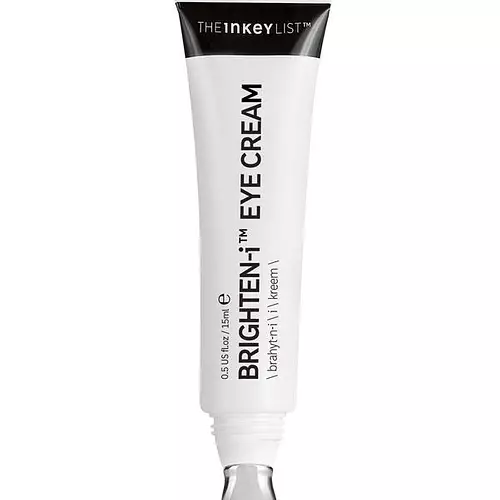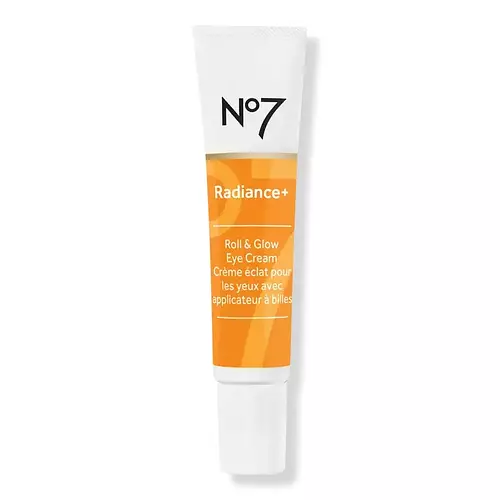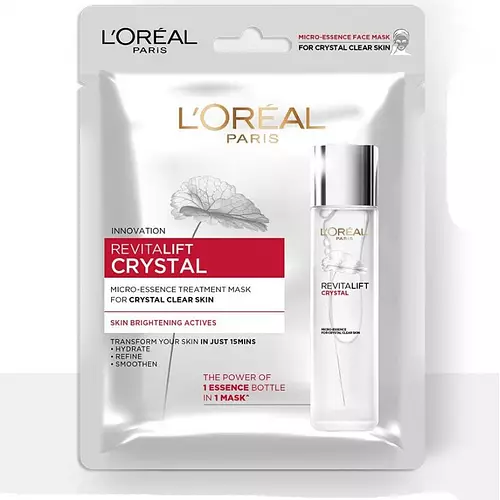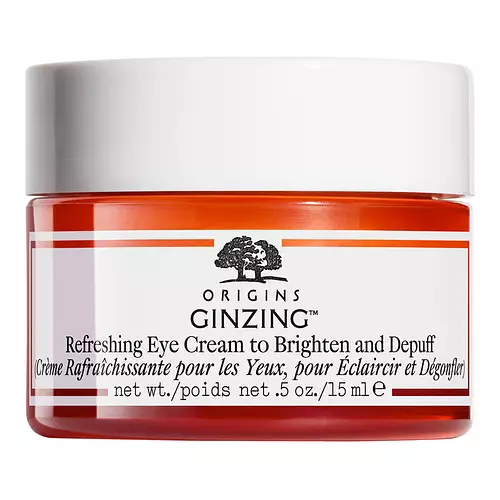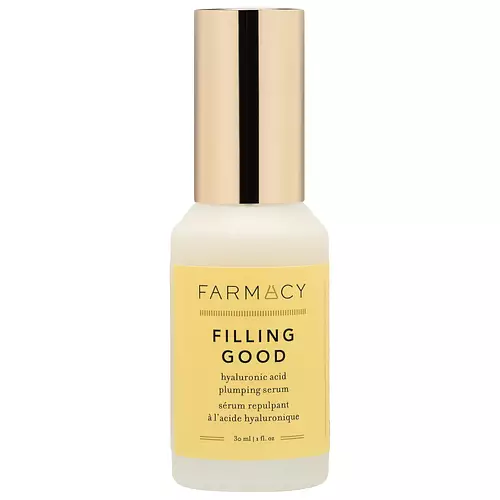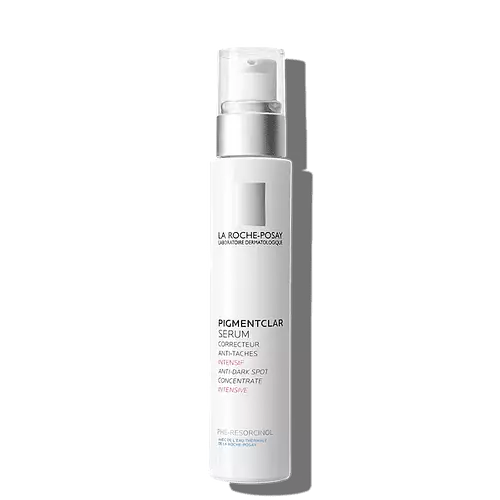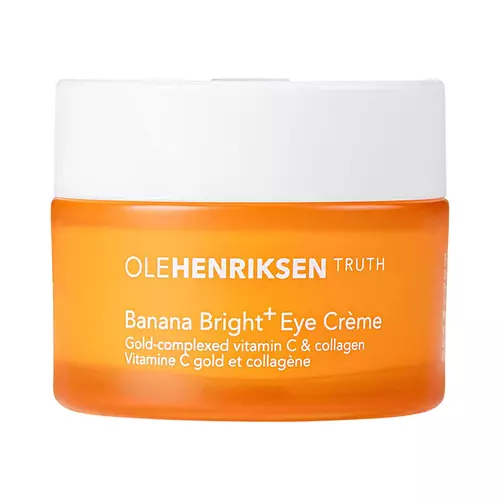Updated on June 18, 2024
Overview
What they are
These products are both vegan, cruelty-free, and reef safe eye moisturizers. They have a total of 8 ingredients in common
Cool Features
They both contain Vitamin E
Suited For
They're both likely to be good for dry skin and brightening skin
Free From
They both do not contain any parabens or sulfates
What's Inside
They both contain oils
We independently verify ingredients, and our claims are backed by peer-reviewed research. Spot a product that needs an update? Let us know.
Ingredient Info
The INKEY List Brighten-I Eye Cream 30 ingredients
Bliss Bright Idea Vitamin C & Tri-Peptide Collagen Protecting Eye Cream 51 ingredients
- Limnanthes Alba Seed Oil
- Pseudozyma Epicola/Camellia Japonica Seed Oil Ferment Extract Filtrate
- Pseudozyma Epicola/Camellia Sinensis Seed Oil/Glucose/Malt Extract/Soybean Flour/Yeast Extract Ferment Filtrate
- Persea Gratissima Oil
- Glycine Soja Oil
- Simmondsia Chinensis Seed Oil
- Argania Spinosa Kernel Oil
- Cetearyl Alcohol
- Limnanthes Alba Seed Oil
- Glyceryl Stearate
- Butyrospermum Parkii Butter
- Palmitoyl Tripeptide-5
- Ascorbyl Palmitate
- Persea Gratissima Oil
- Glycine Soja Oil
- Simmondsia Chinensis Seed Oil
- Argania Spinosa Kernel Oil
- Cetearyl Olivate
- Polyglyceryl-4 Laurate/Succinate
- Peg-100 Stearate
- Sorbitan Olivate
At a glance
Click on any of the items below to learn more
The INKEY List Brighten-I Eye Cream 30 ingredients
Bliss Bright Idea Vitamin C & Tri-Peptide Collagen Protecting Eye Cream 51 ingredients
Notable Ingredients
This product contains 1 ingredient that may have this attribute:
This product contains 1 ingredient that may have this attribute:
Benefits
This product contains 1 ingredient that may have this attribute:
This product contains 2 ingredients that may have this attribute:
Concerns
This product contains 1 ingredient that may have this attribute:
This product contains 3 ingredients that may have this attribute:
This product contains 2 ingredients that may have this attribute:
This product contains 1 ingredient that may have this attribute:
This product contains 2 ingredients that may have this attribute:
This product contains 3 ingredients that may have this attribute:
Notable Ingredients
This product contains 2 ingredients that may have this attribute:
This product contains 1 ingredient that may have this attribute:
This product contains 1 ingredient that may have this attribute:
This product contains 1 ingredient that may have this attribute:
Benefits
This product contains 6 ingredients that may have this attribute:
This product contains 1 ingredient that may have this attribute:
This product contains 5 ingredients that may have this attribute:
This product contains 3 ingredients that may have this attribute:
This product contains 2 ingredients that may have this attribute:
This product contains 2 ingredients that may have this attribute:
This product contains 4 ingredients that may have this attribute:
This product contains 4 ingredients that may have this attribute:
This product contains 3 ingredients that may have this attribute:
This product contains 2 ingredients that may have this attribute:
This product contains 4 ingredients that may have this attribute:
Concerns
This product contains 2 ingredients that may have this attribute:
This product contains 1 ingredient that may have this attribute:
This product contains 1 ingredient that may have this attribute:
Ingredients Side-by-side
Ingredients Explained
These ingredients are found in both products.
Ingredients higher up in an ingredient list are typically present in a larger amount.
Water. It's the most common cosmetic ingredient of all. You'll usually see it at the top of ingredient lists, meaning that it makes up the largest part of the product.
So why is it so popular? Water most often acts as a solvent - this means that it helps dissolve other ingredients into the formulation.
You'll also recognize water as that liquid we all need to stay alive. If you see this, drink a glass of water. Stay hydrated!
Learn more about WaterGlycerin is already naturally found in your skin. It helps moisturize and protect your skin.
A study from 2016 found glycerin to be more effective as a humectant than AHAs and hyaluronic acid.
As a humectant, it helps the skin stay hydrated by pulling moisture to your skin. The low molecular weight of glycerin allows it to pull moisture into the deeper layers of your skin.
Hydrated skin improves your skin barrier; Your skin barrier helps protect against irritants and bacteria.
Glycerin has also been found to have antimicrobial and antiviral properties. Due to these properties, glycerin is often used in wound and burn treatments.
In cosmetics, glycerin is usually derived from plants such as soybean or palm. However, it can also be sourced from animals, such as tallow or animal fat.
This ingredient is organic, colorless, odorless, and non-toxic.
Glycerin is the name for this ingredient in American English. British English uses Glycerol/Glycerine.
Learn more about GlycerinCaprylic/Capric Triglyceride is an emollient, solvent, and texture enhancer. It is considered a skin-softener by helping the skin prevent moisture loss.
Within a product, Caprylic Triglyceride can thicken the product and make spreadability easier by dissolving clumping compounds. An added benefit of Caprylic Triglyceride is its antioxidant properties.
Caprylic Triglyceride is made by combining glycerin with coconut oil, forming a clear liquid. Caprylic Triglyceride has not been found to be toxic for human use in concentrations under 50%.
While there is an assumption Caprylic Triglyceride can clog pores due to it being derived from coconut oil, there is no research supporting this.
Learn more about Caprylic/Capric TriglycerideGlyceryl Stearate is a mix of glycerin and stearic acid.
Glyceryl Stearate is used to stabilize the mixing of water and oil ingredients. By preventing these ingredients from separating, it can help elongate shelf life. It can also help thicken the product's texture.
As an emollient, it helps soften skin and supports barrier-replenishing ingredients.
In cosmetics, Glyceryl Stearate is often made from vegetable oils or synthetically produced. The human body also creates Glyceryl Stearate naturally.
Learn more about Glyceryl StearatePhenoxyethanol is a preservative that has germicide, antimicrobial, and aromatic properties. Studies show that phenoxyethanol can prevent microbial growth. By itself, it has a scent that is similar to that of a rose.
It's often used in formulations along with Caprylyl Glycol to preserve the shelf life of products.
Cetearyl alcohol is a mixture of two fatty alcohols: cetyl alcohol and stearyl alcohol. It is mainly used as an emulsifier. Emulsifiers help prevent the separation of oils and products. Due to its composition, it can also be used to thicken a product or help create foam.
Cetearyl alcohol is an emollient. Emollients help soothe and hydrate the skin by trapping moisture.
Studies show Cetearyl alcohol is non-toxic and non-irritating. The FDA allows products labeled "alcohol-free" to have fatty alcohols.
This ingredient is usually derived from plant oils such as palm, vegetable, or coconut oils. There is debate on whether this ingredient will cause acne.
Due to the fatty acid base, this ingredient may not be Malassezia folliculitis safe.
Learn more about Cetearyl AlcoholHydroxyacetophenone is antioxidant and helps with skin conditioning.
Antioxidants help fight off free-radical molecules. These unstable molecules may damage your skin cells. By helping stabilize free-radicals, antioxidants may help in anti-aging.
Hydroxyacetophenone boosts the efficiency of other preservatives.
Learn more about HydroxyacetophenoneEthylhexylglycerin (we can't pronounce this either) is commonly used as a preservative and skin softener. It is derived from glyceryl.
You might see Ethylhexylglycerin often paired with other preservatives such as phenoxyethanol. Ethylhexylglycerin has been found to increase the effectiveness of these other preservatives.
Ingredient Ratings
Here's what our community thinks of the ingredients in these two products.
When to use
The INKEY List Brighten-I Eye Cream 30 ingredients
Bliss Bright Idea Vitamin C & Tri-Peptide Collagen Protecting Eye Cream 51 ingredients

Reviews
Here's what our community thinks
The INKEY List Brighten-I Eye Cream 30 ingredients
Lakooo
Good, but not a stand-alone eye product
Like everything from the Inkey List, this is affordable, reliable, and well formulated, if not a product...
Good, but not a stand-alone eye product
Like everything from the Inkey List, this is affordable, reliable, and well formulated, if not a product no one can live without. To get the full benefit, you have to use a hydrating toner/mist and pair this eye cream with the Inkey List caffeine eye cream in the morning and retinol eye cream at night.
Bliss Bright Idea Vitamin C & Tri-Peptide Collagen Protecting Eye Cream 51 ingredients
KristyD_2021
BLISS IS NOW CRUELTY FREE
I noticed that this website lists Bliss as not cruelty free, however they are now a Beauty Without Bunnies Certified...
BLISS IS NOW CRUELTY FREE
I noticed that this website lists Bliss as not cruelty free, however they are now a Beauty Without Bunnies Certified company. Their parent company also is certified cruelty free as they only sell domestically in the US and do not engage in third party animal testing.
I have used their Vitamin C eye cream about 2-3 x a week and noticed it helps reduce dark circles and some puffiness.
